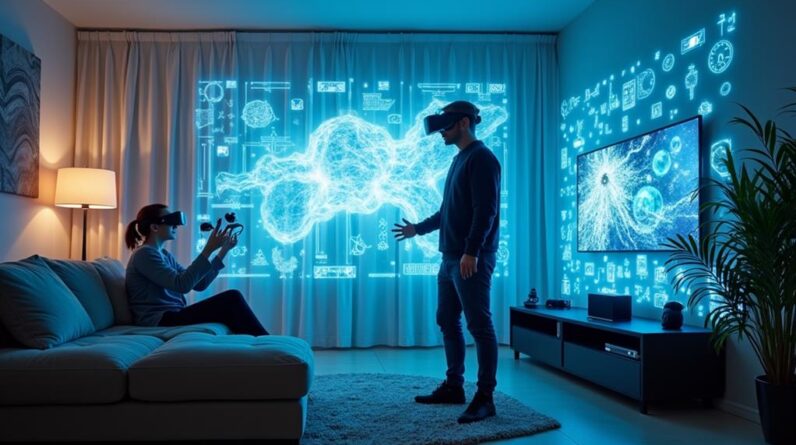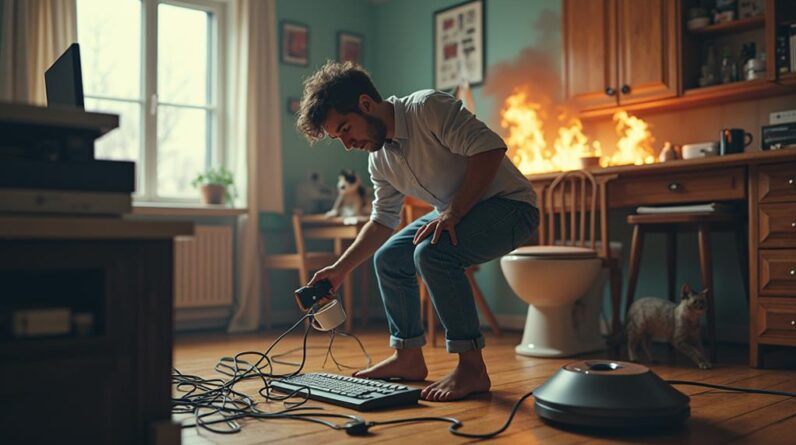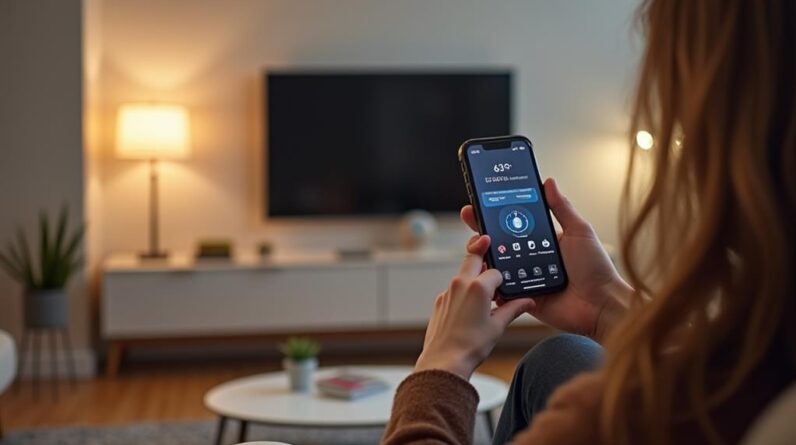
What's up guys! It's Chris Majestic here with Majestechs. I've had several people ask me questions about
home automation and how I have certain things working in my house so I want to do a 3-part
guide on home automation. The very first video is going to be a general
overview and that's going to include everything you need to know about home automation and
what's out there so stay tuned. So the first thing you need to know is that
modern home automation is usually done with what's called a "smart hub".
Well what is a smart hub? A smart hub is going to be a central connection
point for all of the different smart devices that you have in your home. It's also going to handle all of the configuration
and the processing for what you want to do with home automation. So there are a lot of smart hubs out there
nowadays and it can be a little confusing, but the one that I normally recommend… I normally recommend 1 of 2 to most people. The very first one is going to be Samsung
SmartThings and the other is going to be the Wink Hub. Now both of these have their strengths and
their weaknesses but personally what I recommend to most people is the Samsung SmartThings
Hub just because it's a little bit more flexible and it allows for more expansion and scalability
than something like the Wink Hub, but I normally recommend the Wink Hub to people that want
simplicity.
If that's your most important thing to you
and you don't really want to do crazy and elaborate things with home automation and
you just want to do some simple stuff then you can get the Wink Hub. It's really easy to get started with and it's
going to be a little bit more intuitive than something like the Samsung SmartThings Hub. That being said, all the other hubs have their
benefits as well but as far as scalability and interoperability working with other devices
and other smart hubs and things like that, Samsung SmartThings is pretty much going to
be the best right now. One thing you need to keep in mind when you're
looking at these hubs is that most of them are cloud-based. What that means is that the configuration
is stored out there on the cloud and that means that it needs to have a constant Internet
connection in order to work. Since it's cloud-based and it requires a connection
to the internet, if you lose Internet connection you have nothing so if you're using it in
a critical situation like "I don't want to carry keys because I just want to use my phone
to unlock my door." If you've lost Internet in your house you
can't unlock your door so you want to have a failsafe in place, something as simple as
a key, just in case you do lose Internet and you can't get into your house.
So now that you know what the hubs are, when
you go to buy one of these hubs you're usually just going to buy a hub by itself and then
you're like "okay now what?" What you need to know as far as devices is
that these devices use certain protocols. Now I know when I say the word "protocol"
I lose Iot of people so don't think that this is really that complicated because it's really
not. Basically, the protocol is the way that your
smart hub is going to communicate with the devices that you buy. I'll use Samsung SmartThings since that's
the hub that I use and that's the hub that I recommend to most people. So if you buy a Samsung SmartThings Hub and
you go out there to the store, whether it's Lowes, Home Depot, you go on Amazon and you
want to buy sensors, the thing to keep in mind is that it's going to be compatible with
most of the protocols out there but the main 2 that you're to see are Z-Wave and Zigbee.
So if you see that it says it's a Z-Wave sensor,
like a Z-Wave water sensor or something like that, it will work with Samsung SmartThings
or if you see a Zigbee device, whether it's like a motion sensor and it says Zigbee, that
will also work. So if you want to, you could actually take
something like SmartThings and turn that into an actual alarm, which is going to include
things like open/close sensors, whether it's a tilt sensor, or motion sensor, all those
types of things. And have it actually work as an alarm system
for your house. You could do sirens and a water sensor, put
that in the basement and you could buy a water shut-off valve and if there's water in the
basement, shut the water off. Whatever you want, there's some type of Z-Wave
or Zigbee device out there that does it. So that moves us on to one of the most popular
things that people do with smart hubs, and that's lighting.

So when it comes to lighting you're really
going to have 3 different options. One is going to be a new wall switch, whether
it's an on/off switch or a new dimmer. The second option is going to be a wall outlet. Maybe you have a lamp plugged into the outlet
and you just want to switch that on or off. The third option is really the most common,
which is just to swap out a bulb, so maybe in your bedroom you have a lamp or a light
in the ceiling.
You just unscrew the regular bulb you have
in there, put in a "smart bulb" or a "connected bulb" and that's just going to work through
your smart hub. So you have a lot of different options when
it comes to lighting. Okay, so that brings me to myself. So what devices am I using? What kind of home automation do I have set
up? Well, I use the Samsung SmartThings Hub as
my central smart hub.
I also have the Logitech Harmony Home Hub. I also have an Amazon Echo as well as the
Echo Dot and I do use that voice control automation so that works through the SmartThings Hub
as well as the Logitech Harmony hubs to control things like the TVs and lights in my house. Alright, so I just want to briefly show you
just in case you haven't seen any of my other videos, just some of the home automation tasks
that I have setup. So the best way to show you this is going
to be with the Amazon Echo since I have the Amazon Echo linked to SmartThings and the
Harmony Hub. Chris: "Alexa, open Chris' garage door." Alexa: "Okay." Chris: "Echo, turn on basement TV." Alexa: "Okay." Chris: "Alexa turn on outside garage lights." Alexa: "Okay." Chris: "Alexa, turn the house alarm on stay." Alexa: "Okay." Chris: "Alexa, set the downstairs temperature
to 74 degrees." Alexa: "Setting downstairs A/C to 74." Alright, so as you can see I have all of these
things set up and they're all working together.
So this is where your planning really comes
into play so you want to make sure that all of the devices you're buying are compatible
with the hub that you're buying and make sure the hubs are compatible with each other as
well. So depending on how deep you want to go as
far as adding a bunch of devices and a whole lot of different automation, it can be very
difficult to set these hubs up. Now this is where getting a Wink Hub over
a SmartThings Hub actually comes in handy because the Wink Hub is a little bit easier
to set up and use compared to SmartThings. Now, it is easy for the most part to add devices
to either one of these but when you're setting up your automation, that's when one really
shows over the other. So you have to be patient either way. You have to do your research and it's going
to take you some time to get these set up.
Alright guys, well that's going to be it for
this video. Now keep in mind, this is video 1 of 3 so
I'm going to have a 3-part series. So this is going to be just a general overview
in this video. I'm going to go in more detail in the other
2 but I thank you for watching this video. Hopefully you found it helpful. If you did, please mash that "Like" button
for me. Don't forget to subscribe and I'll see you
in the next video.
As an Amazon Associate I earn from qualifying purchases.







